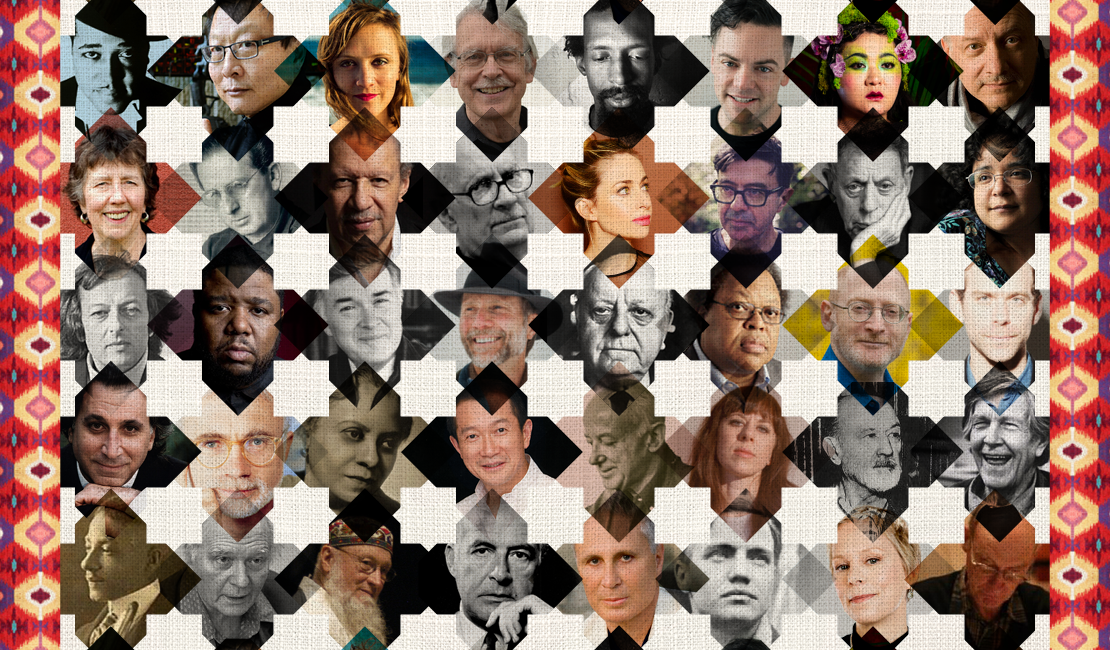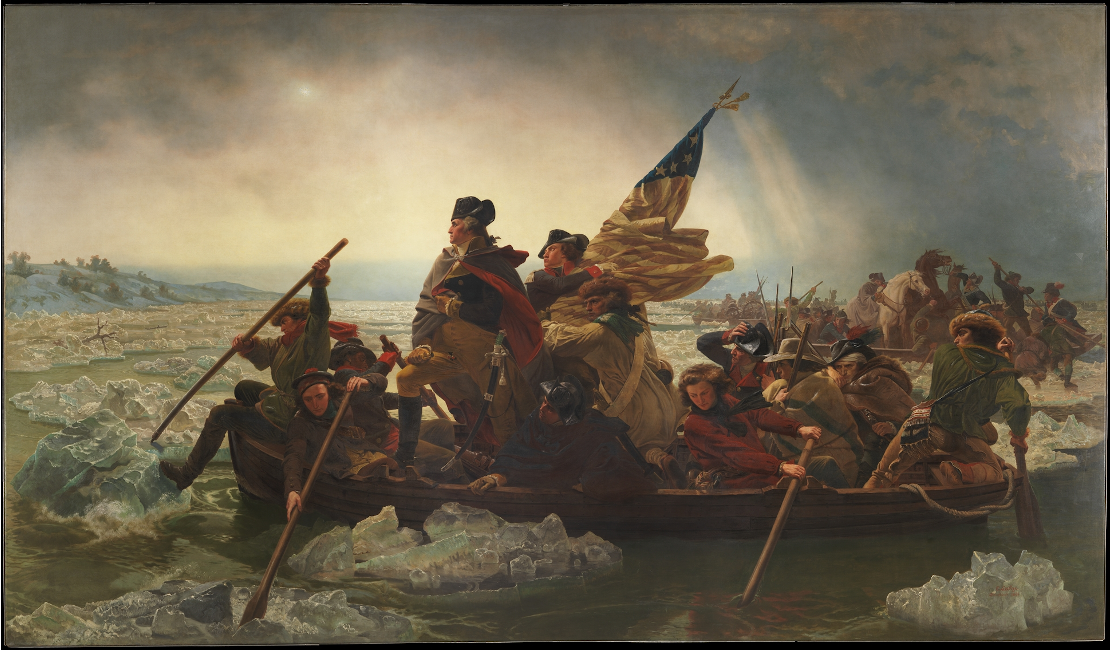Independent Repertoire: Inspired by American Art and Writing

Many composers have drawn potent inspiration from American art and poetry. The Unite States’ visual art and writing have been particularly influential on several generations of American composers, as represented by the following works.
George Antheil, McKonkey’s Ferry Overture (1948)
In 1948, the self-styled “bad boy of music” George Antheil wrote a short but expressive orchestral work focused on a very different sort of revolutionary: George Washington. McKonkey’s Ferry Overture takes inspiration from Emanuel Gottlieb Leutze’s oil painting of Washington crossing the Delaware River at McKonkey’s Ferry, Philadelphia. The piece sketches an energetic portrait of the daring and danger of shepherding 2400 Continental soldiers across the icy river into a winter storm — a risky move that won Washington’s forces their first major victory of the American Revolution. Throughout the overture, Antheil skillfully sweeps thematic material across the orchestra to create a sense of perpetual motion and turbulence that complements the visual drama of Leutze’s composition.

Emanuel Leutze, Washington Crossing the Delaware (The Metropolitan Museum of Art, gift of John Stewart Kennedy, 1897)
Augusta Read Thomas, Absolute Ocean (2008)
Scored for soprano and harp soloists with a small orchestra, Augusta Read Thomas’ Absolute Ocean gorgeously sets three poems by one of the most important American modernist poets: e.e. cummings. Throughout the work, a small ensemble of pitched percussion, celesta, and piano often play alongside the harpist, creating a kind of shimmering halo around the harp’s sound that cleverly evokes many of the poems’ most memorable images: the moon “hiding in her hair,” the “rain’s pearls singly whispering,” and “ships snowily sailing” into the “absolute ocean” of the work’s title. Echoes of Mahler, Berg, and Debussy combine to create a web of stylistic influences that complements the idiosyncratic syntax and free form of cummings’ groundbreaking modernist poetry. Absolute Ocean prompts us as listeners to — as the final poem asks — "open [our] heart[s]” so that its creators can “give [us] a treasure/of tiniest world/a piece of forever.” An alternate version for mezzo-soprano rather than soprano is available for premiere.
John Corigliano, Mr. Tambourine Man: Seven Poems of Bob Dylan (2003)
John Corigliano’s Mr. Tambourine Man: Seven Poems of Bob Dylan sets Dylan’s lyrics as poetry. While searching for texts for this midcareer song cycle, Corigliano had heard of Dylan’s reputation as a wordsmith and decided to read his lyrics without listening to the accompanying music. He was struck by the lyrical beauty and secured permission to set the texts of seven beloved Dylan songs using Corigliano’s own distinct musical vocabulary. In so doing, he both honored the often underrecognized textual aspect of the singer-songwriter’s craft (an aspect that, for Dylan, would later be awarded a 2016 Nobel Prize in literature) and created a uniquely American layering of musical traditions. Mr. Tambourine Man’s seven movements traverse core Dylan terrain, from what Corigliano calls the “political fury” of “Masters of War” to the “premonition of an apocalyptic future” of “All Along the Watchtower;” the “beginnings of awareness of a wider world” of “Blowin’ in the Wind” to the “victory of ideas” offered by “Chimes of Freedom.” This arc traces what Corigliano sees as a “journey of emotional and civic maturation,” which celebrates the rewards of artistic, personal, and community engagement.
John Adams, Harmonium (1981)
In Harmonium, John Adams pairs a verse by the 17th-century English poet John Donne with two poems by the pioneering 19th-century American poet Emily Dickinson: the famous “Because I could not stop for Death” and “Wild Nights.” Adams sets this textual trio for chorus and large orchestra, using an expansive harmonic rhythm and gorgeous variety of “surface” figuration to create what he describes as “an image […] of a single tone emerging out of a vast, empty space and, by means of a gentle unfolding, evolving into a rich, pulsating fabric of sound.” The slow carriage ride of Dickinson’s “Because I could not stop for death” inspires a meditative space, while “Wild Nights” unleashes a kind of rhythmic and vocal euphoria. Above all, Adams creates a longform expressive arc that aptly captures the penetrating investigation of our inner lives that Dickinson epitomized.
Explore American Themes in Classical Music
American Cityscapes and Landscapes | American History and Politics | Engaging with American Musical Traditions | Inspired by American Art and Writing | American Minimalism | A Land of Immigrants: Perspectives from Abroad | American Optimism — Grappling with Dark and Light
